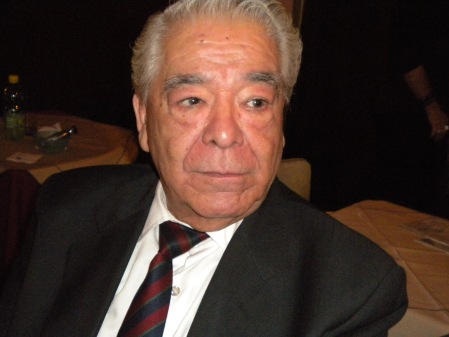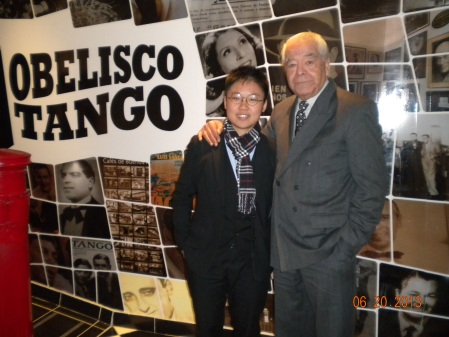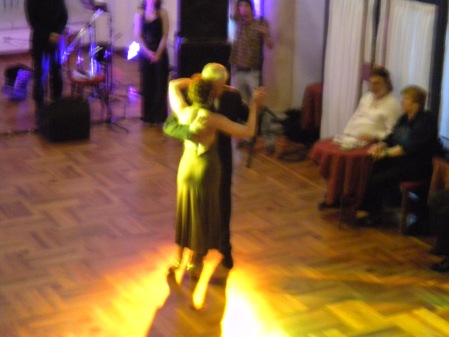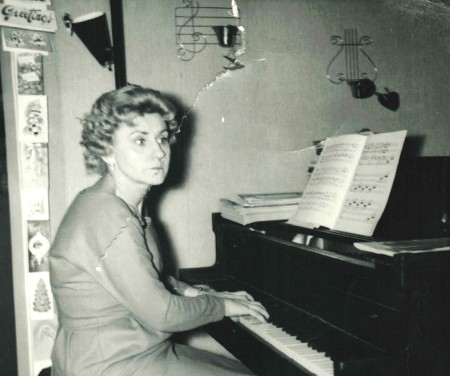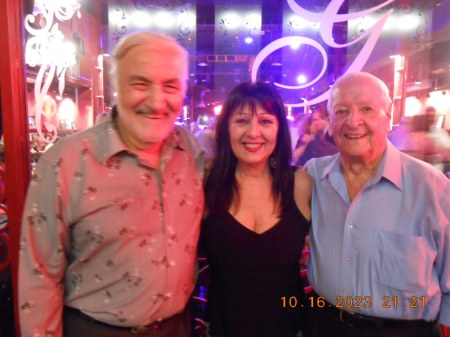Before you get a glimpse of the completely new interior of Salon Canning as it is now, I want to post some old photos of the way it used to be. This photo shows the mural that covered the back wall of the salon, a tribute to those who danced in Salon Canning for decades. Speakers were hung over the dance floor providing the best sound for the dancers. Every table in the salon had two chairs positioned towards the dance floor. The salon was a theater, the floor was the stage, and the audience always watched the show. Tango was the star attraction in every way.
The tables were set up with enough space between them with access to the floor. When a milonguera accepted the cabeceo of a milonguero, she remained seated until he arrived at the edge of the dance floor where she was seated and went through the aisle to meet him. The photo below shows how the tables were arranged for the Sunday milonga by Dario Rodriguez for more than 35 years. It worked.
I attended the reopening of Salon Canning on April 7, at the invitation of Pablo Etcheverry, the organizer of Milonga Sans Souci. I don’t know anything about the history of the cabaret Sans Souci that later became one of the famous confiterias bailables in the center of the city along Avenida Corrientes. Pablo’s research at the national library didn’t uncover any information about its history. The only potential source is from the memories of the remaining milongueros viejos.
The photo below was my first glimpse of the new Salon Canning where everything has changed. The black and white tile floor replaced carpeting. Speakers were removed from the ceiling. The photo mural has been replaced by artistic videos projected on the wall. I doubt many dancers paid any attention to them since focusing on the dancing is a priority.
Dancers focus their attention on watching the dancing while seated. It’s the only way to find the best partner for the next tanda.
The man in charge of providing the music at Milonga Sans Souci is Joni “El Chiqui” Canete who is set up in the far corner of the salon. Since all the speakers were removed from the ceiling, El Chiqui provided his sound equipment. Every tanda was excellent, so he kept the dance floor full.
The white spot on the wall comes from a spotlight near the bar that changes color and size. Most of the time it was red.
I enjoyed the music for two hours while standing and moving around the salon to take photos and talk with the dancers. I had interesting conversations and saw a few familiar faces.
I went to check out the ladies’ room at the end of the hallway and took this selfie for fun.
These two signs in the ladies’ room caught my attention so I decided to include them in my photos. They are long overdue in milonga restrooms.











